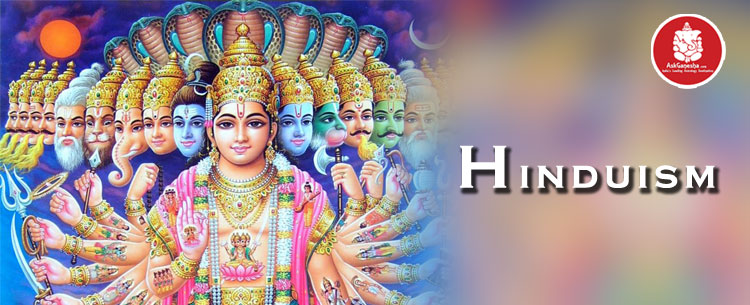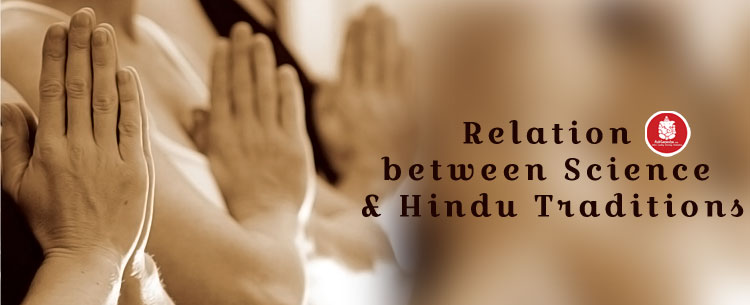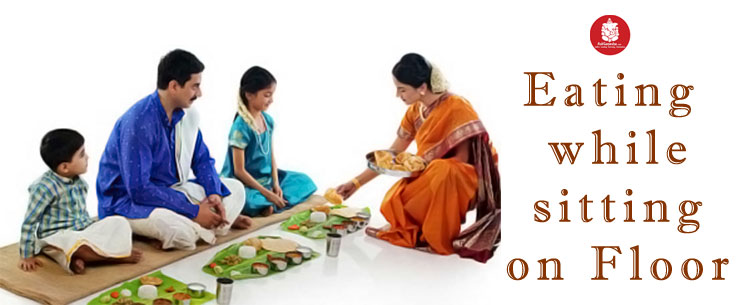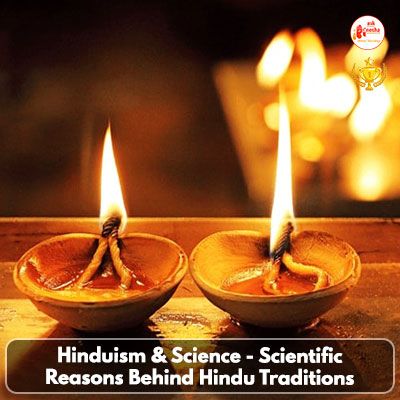Hinduism:

Hindu traditions - Hinduism is not just a religion but a way of life, a way of life that leads to the path of righteousness. It is a thought rather than a religion; emerged from almost 500- 300 BCE. And it is perhaps the only sect in the world that prayed to nature and hence was also called as the nature worshippers. At the same time they prayed for the way of life that is full of eternal bliss and attain moksha. Hinduism, is a board of philosophies. It is based on the concepts and rituals of Cosmology, textual resources and the sites of Pilgrimage. The traditions, which are followed in Hinduism or Hindu religion, were nothing but superstitions. These traditions were based on the scriptures and the techniques that were inculcated by their ancestors.
Relation between Science and Hindu traditions:

Hindu traditions were just superstitions, until logic and scientific reasons were attached to it. Though for lay man the religious practice makes the definition of the word tradition. But since the advent of science and technology, the meaning of the religion changes. The science adds meaning to the religious practices, and gives it permanent definitions. As traditions can be interpreted any way according to the person and the state of mind they are in at the time of following the traditions.
The traditions and Science behind Hindu religion:

These Hindu traditions have science behind Hindu religion, following are the traditions:
Throwing the coins in well or water bodies:

The religious reasoning behind this is that it brings in luck. Unlike today, the coins in the ancient times were made of copper. The copper is a good metal and vital for human body. Throwing the coins in river in the ancient times had a logical reasoning that our for-fathers or ancestors. They wanted us to get enough copper content through the river and water bodies water.
The Namaste Posture:

Traditionally in the Hindu culture Namaste is a stance to greet someone with humility and humbleness, a method of showing respect to big and small alike. Scientifically the namaste stance is joining of the fingers and pressure points of eyes, ears, and mind. Pressing the fingers together means pressing the pressure points means that it activates the mind and increases memory and remembrance. Since there is no physical contact so no receiving and giving of germs are seen.
Indian Women wear toe rings:

Wearing toe ring is not just an ornament of a piece of jewellery, but holds great significance to the married women. It also has scientific reason behind it. A particular nerve from the second toe passes through the uterus and connects to heart. Wearing toe rings to this finger means strengthening the uterus. It will keep the uterus healthy and helps in regulation of blood.
Applying Tilak or kumkum on forehead:

The point between the two eye brows is said to be one of the main nerve point. And applying Tilak or Kumkum means that it retains the energy in the body and increases concentration. It also helps in facilitating the blood Supply to face and face muscle.
Applying Mehandi and Henna:

It is not only for providing color to hand during wedding for a bride. But also a medicinal herb, applying mehandi to hand or head will de-stress you and create and cools down and nervous energy in the body and increases blood circulation. It makes your hair soft and lustrous and during wedding it creates beautiful hands and legs.
Eating while sitting on Floor:

Not just a religious or cultural symbol, but it is that when we sit in the Sukhasan Position and eat. When we sit on the floor cross- legged in Sukhasan or a half Padmasana brings the a sense of calm and helps in process of digestion, it is believed to trigger the brains cells so that the body is in the phase of digestion.
These legends and superstitions become logic when science is attached to it. Religion and religious beliefs are based on the self- interpretation, and are rather personal, attaching logic to these beliefs does not mean questioning the traditions, but providing a solid definition to all the superstitions.
At askganesha we provide many vedic stories for this very purpose. 


 Translate
Translate




















